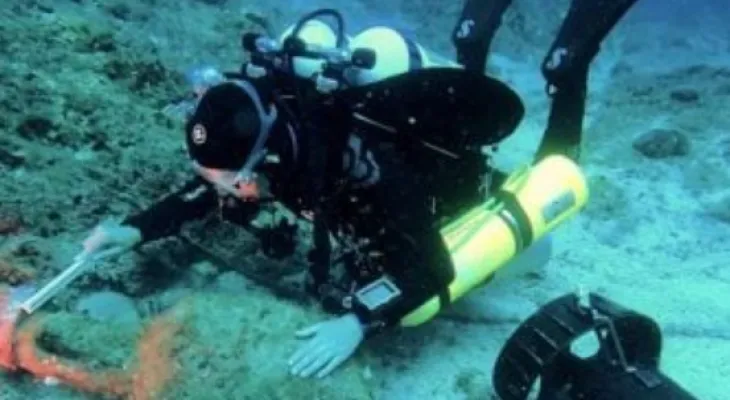Search here
Newspaper
Search here

Arab Canada News
News

Published: July 13, 2024
Scientists have discovered the wreckage of an ancient Greek ship, wherein they found an astonishing analog computer. The remnants of the shipwreck, dating back to Roman times and the first century BC, were accidentally discovered by divers in 1900 off the coast of Antikythera, a Greek island located at the edge of the Aegean Sea, which is part of the broader Mediterranean Sea.
Numerous artifacts were retrieved from the wreck site, including bronze and marble statues, coins, and other items, but perhaps the most interesting discovery from the wreckage is a mysterious bronze device that comprises a number of interlocking complex gears, known as the Antikythera mechanism, which is considered the oldest known "analog computer" in the world, according to Newsweek.
The manually operated and heavily corroded device is believed to have been used to predict the movements of celestial bodies, such as the sun and the moon, which would have helped in planning significant events like religious rituals and agricultural activities.
The device and the other artifacts retrieved from the shipwreck make it one of the most important discoveries in modern archaeology, according to the Woods Hole Oceanographic Institution. Despite the significance of the artifacts retrieved from the wreck, the site has remained largely unexplored, partly due to its location and the shape of the seabed, making research difficult.
Among the highlights of the exploration, researchers identified a large part of the structure of the ancient ship, which features its original fastenings and an outer protective layer that is still in excellent condition.
Now, the expedition to the wreck, conducted between May and June of this year, has led to some "important" discoveries, as investigations were part of a research program led by the Swiss School of Archaeology in Greece (ESAG) and overseen by the Underwater Archaeological Institute of the Greek Ministry of Culture and Sports.
This discovery shed some light on the shipbuilding process, which experts believe relied on a "wood first" method. It appears that builders crafted the hull first with wooden planks and then installed the ribs inside it.
For his part, Lorenz Bumerin from the University of Geneva, co-director of the research project, stated that this structure allows us to better understand the characteristics of shipbuilding that have remained elusive until now, but also to determine the precise location and orientation of the wreck. The expedition also confirmed the existence of a second wooden ship in the main wreck area, and investigations in recent years have raised the possibility of several ships being involved in this ancient tragedy.
The research team also documented the pottery at the site and opened excavation trenches, revealing around 300 pieces, including 21 marble pieces, numerous structural elements of the ship's hull, and more than 200 ceramic pieces. According to the team, the marble fragments indicate the presence of several statues. The Antikythera mechanism has upended our understanding of ancient technology, as no other device known featured a comparable level of sophistication for over a thousand years after its creation.
Comments